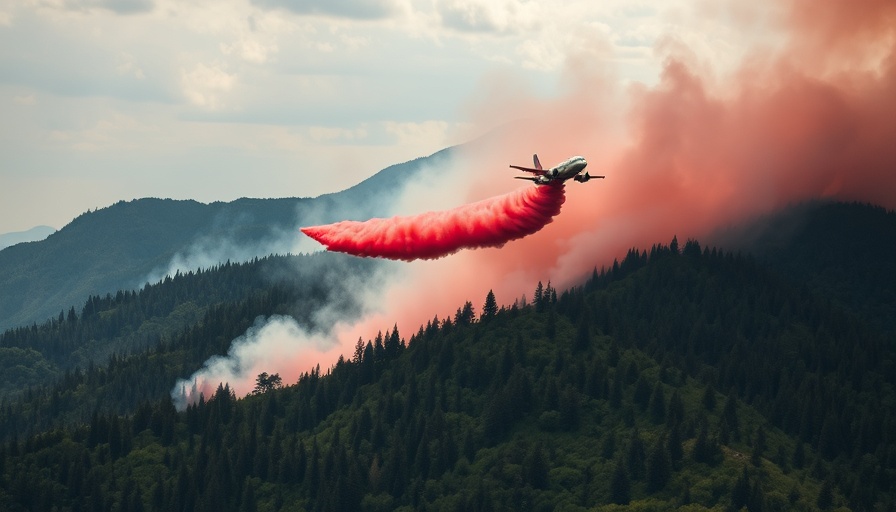
Ongoing Battle Against Wildfires in Okanagan
Residents of Okanagan Falls are currently witnessing a significant wildfire incident, with firefighting crews and air tankers deployed to combat the flames. The fire ignited on a Wednesday afternoon, near Mount Hawthorne, and has been described as a threat due to its rapid spread. With heavy smoke visible from a distance, local volunteers and the B.C. Wildfire Service are working tirelessly to control the blaze, which is estimated to cover just under a hectare and is classified as out of control.
The Human Element: Causes and Community Response
Authorities suspect that this wildfire may be human-caused, which raises critical concerns regarding fire safety and prevention in the area. The Regional District of Okanagan-Similkameen has urged community members to stay clear of the affected zones while the firefighting efforts continue. As a proactive measure, they have also initiated communication channels using Voyent Alert! to keep the public informed of any developments, reinforcing the importance of community awareness and coordination in crisis situations.
The Role of Air Tankers in Wildfire Control
The strategic use of air tankers plays a pivotal role in modern firefighting efforts. These aircraft are equipped to drop large volumes of fire retardant or water over expansive areas, enabling quicker suppression of wildfires, especially in difficult terrain like that surrounding Okanagan Falls. This capability not only aids in controlling the fire but also helps in protecting surrounding communities from encroaching flames.
Broader Implications: Wildfires and Climate Change
Wildfires have become increasingly common, and their frequency can be attributed to changing climate conditions. Rising temperatures and prolonged droughts create ideal conditions for wildfires to ignite and spread. As communities like Okanagan Falls deal with such emergencies, it's essential to reflect on the broader environmental issues at play. What measures are being taken on a policy level to mitigate climate change? How can individuals contribute to fire prevention? These are pressing questions that require answers.
Community Resilience in the Face of Adversity
In moments like this, the resilience of the community shines through. Local volunteers are crucial in supporting firefighting efforts, demonstrating the strength that arises from collective action. This incident provides an opportunity for residents to partner more closely with fire services, creating programs that encourage preparedness and education about fire safety. Workshops and community meetings can foster engagement and promote understanding among residents on how to navigate wildfire risks.
Lessons Learned: The Importance of Fire Preparedness
Following this incident, future discussions within the Okanagan community might focus on establishing a more robust fire preparedness plan. Being equipped with the right tools and knowledge can mean the difference between containment and disaster. What resources and training opportunities are available to residents to fortify their own homes against fires? Identifying local programs and partnerships can enhance readiness for similar emergencies down the line.
Conclusion: Standing Together in Crisis
This wildfire near Okanagan Falls is a stark reminder of the vulnerabilities faced by communities in fire-prone regions. It underscores the collective responsibility to prioritize fire safety and resilience planning. As firefighting efforts continue, it is essential for residents to stay informed and prepared. Together, through cooperation and support, the community will emerge stronger from this challenge.
 Add Row
Add Row  Add
Add 




 Add Row
Add Row  Add
Add 

Write A Comment